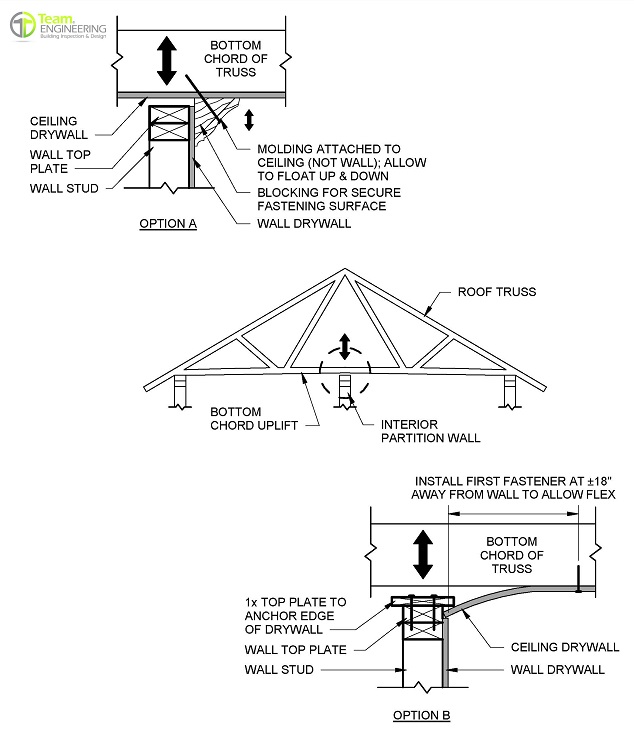
Truss Uplift Wall Connection
By Brian Ki, P.E.
Roof trusses have become more and more common in wood-framed construction. Their strategic design allows for economical material to be used, easy fabrication, and quick installation that saves costs all around. One of the most common cosmetic problems with wood-framed roof trusses is associated with ceiling cracks developing at an interior wall.
In most situations, these cracks are purely a cosmetic problem and are developed due to the natural uplift in the bottom chord of the roof trusses above. The uplifting movement is a result of the natural flex and bend of each member depending on the seasonal conditions. Properties in New Hampshire and Massachusetts typically experience all types of weather at all different levels that can affect your roof trusses. Temperature, moisture and the applied loads (i.e. snow, rain) all play important factors on when this uplifting movement occurs.
In most cases, there is no ultimate repair to eliminate this uplifting movement as the truss must naturally react the way it wants to in order to gain its full structural capacity. Rather, there are two cosmetic repairs to hide the cracks and create a much more appealing ceiling finish as shown in the sketch. Additional factors that may improve the conditions include reducing moisture within the house, proper ventilation, and, for new construction, avoiding long spanning trusses.
If you are experiencing any ceiling cracks at your property, please give Team Engineering a call today and we’ll be happy to give you our expert opinion!
More Articles From...
| This Category | Engineered Consultations, Home Repairs, Residential Engineering, Structural Design, Structural Engineering |
| This Author | Brian Ki, P.E. |
